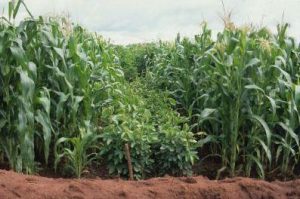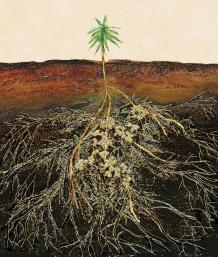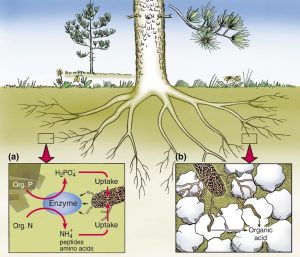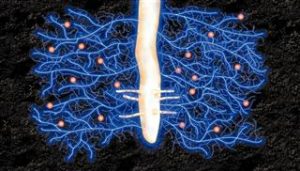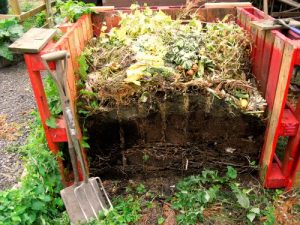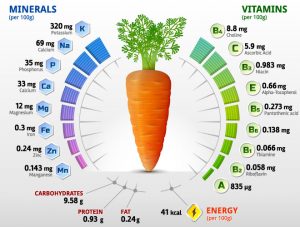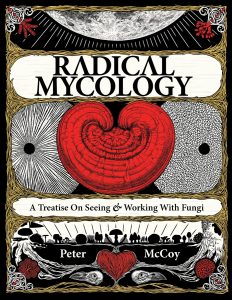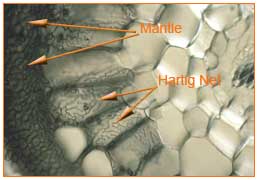This week’s focus is taking a look at geological minerals, and how they affect soil health. I’ve been looking at The Farm as Ecosystem, by Jerry Brunetti. In order to get a better understanding, it’s helpful to know whats in our soil, and what we may expect to see from the results. Soil tests can give us an idea of what to anticipate from our soils, giving us information about which soil applications you may add to balance minerals and encourage your plants to flourish with plenty available nutrients. Below is a summary of important minerals, and information regarding their influence on plants and soil.
Soil categories
Geological- Minerals
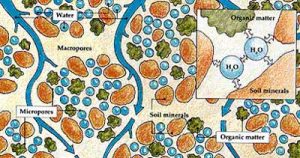
Basic Soil Components – eXtension
articles.extension.org
Biological- Bacteria, Bacteriophages, Viruses, Fungi, Protozoa, Algae, Arthropods, Insects, Pollinators.
Physical- Clay, Silt, Sand, Loam, and Humus,
When we are determining soil quality, we are taking a look at the relationship and dynamics between geological, biological, and physical characteristics.
Nutrients that have been placed at a high importance are Nitrogen, Phosphorus, and Potassium.
Also vital to plant health are trace element levels of Sulfur, Phosphate, Calcium, Magnesium, Potassium, Sodium, Chlorine, Nickel, Iron, Manganese, Zinc, Copper, Molybdenum, and Boron.
Mineral functions in soil and plants
Nitrogen
Most abundant nutrient required for plant growth. Excess Nitrogen in plant tissue attracts insects and disease. Excess nitrogen is unhealthy for human, and animal consumption. Nitrogen mismanagement is a common agriculture mistake, contaminating ground and surface water. Nitrogen produces nitrous oxide, the most potent greenhouse gas, and destroys forests by killing symbiotic fungi in roots.
Three forms of Nitrogen – Ammonium (NH4), Nitrate (NO3), Organic Nitrogen (amino acids)
Conversion of NH4 into amino acids requires an expenditure of energy in the roots, causing the plant to send carbohydrates down to the rhizosphere. Amino acids required to produce complete proteins. This process requires more photosynthesis to occur, creating more energy than is actually needed for amino acid synthesis. Surplus energy is shared with the microbial community surrounding the roots.
As plants take in Nitrogen, they release hydrogen lowering the PH around root hairs. Acid Ph in the rhizosphere is required to inhibit plant pathogens and increase the uptake of minerals, especially trace elements.
Trace elements are required to produce secondary metabolites-Phenols, Terpenes, Alkaloids (plant protection from pests).
-Lighter, sandy soils require repeated additions of nitrogen in small amounts over the growing season.
-Winter cover crops are nitrogen catchers, picking up soluble nitrogen into plant tissue for the next season.
Calcium
Recommended to be at 65-77% of base saturation due to its large role in fertility. Calcium helps nutrients travel throughout the plant. It improves soil texture, and makes phosphorus and trace elements bioavailable. It also improves root, stem, and leaf development, affecting the protein quality of plants. Calcium helps plants resist fruit rotting, prevents the formation of mucilage and aging, and helps with freeze resistance. Foliar sprays are more effective than soil applications when these symptoms are experienced. Drought is a major cause of calcium stress more so than low calcium levels within the soil, since calcium precipitates, and can’t move in the soil as it dries out.
-Irrigation water too high in sodium and bicarbonate also contributes to calcium stress symptoms.
-Calcium neutralizes toxic levels of oxalic acid through the creation of calcium oxalate.
Sources of calcium
-High calcium limestone, Dolomitic limestone, Gypsum or calcium sulfate, Cement kiln dust, burnt lime, Sugar beet lime, Calcium silicate, Calcium chloride, Paper mill sludge, Calcium nitrate, Aragonite
Phosphorus
Core element of the energy currency of all-life forms, namely ATP. Triple negative charge causes it to lock up with cations like Calcium, Magnesium, Aluminum, Iron, and Potassium. Essential for the synthesis of DNA and RNA. Aids photosynthesis, flowering, fruiting, seed production, nitrogen fixation, root growth, and stalk strength. Perennial crops can utilize more organic and less soluble forms of phosphate than annuals. Recommended to apply soluble form of phosphate as well as slow release phosphate. Bone meal and guano sources perform both fast and sustained-released phosphate.
Sources
-Soft rock phosphate, Hard rock phosphate, Bone meal, Charred bone meal, Bird Guano, Hen manure/compost, Fish Hydrolysate, Super phosphate, Triple super phosphate, Diammonium Phosphate, Monoammonium phosphate, Orthophosphate, Monopotassium phosphate, Biosolids, Dipotassium phosphate
Potassium
Major element that doesn’t incorporate into organic compounds. Remains in ionic form in solution within the cell. Activator or many enzyme systems important for starch synthesis, photosynthesis, protein synthesis, and translocation of sugars. Enhances water uptake, drought tolerance, hardiness, and resistance to fungal and insect pests. Locked up volumes of potassium aren’t available to plants, and don’t show up on soil tests since they aren’t located on exchangeable sites of the clay colloids. Increasing organic matter invites bacteria and fungi to produce enzymes and acids to help release potassium. Perennial root systems have an advantage in mobilizing potassium, since they can access the exchangeable and solution sources of potassium, and have enzyme, and organic acid resources to extract hard to access sources of potassium. Higher ph soils don’t readily accept potassium inputs, and when combined calcium and magnesium base saturations exceed 90 percent it is hard to build potassium levels. High sodium levels, often found in arid regions, compromise potassium availability. Excess nitrogen drives potassium down.
Sources of Potassium-
-Potassium sulfate, Potassium chloride, Potassium hydroxide, Dipotassium hydroxide, Monopotassium phosphate, Potassium nitrate, Glauconite, Wood ashes, Manures.
Sodium
Part of the cationic mineral balance. Affects soils pH and electrical conductivity. Sodium governs the osmotic pressure in cellular tissues and fluids in plants as well as animals/humans. Excess sodium a common issue, preventing clay from granulating. In C4 plants and warm-season perennials, sodium is needed to bring about a higher utilization of carbon dioxide. Sodium buildup comes from irrigation. Saline waters are an issue, since they will eventually displace other critical cations such as magnesium, calcium, and potassium. Salts will contribute to nutrient deficiency. Adding potassium silicates, humic acids, and soluble gypsum to saline water can counter negative effects. Over tillage can allow sodium and other salts to accumulate.
Sources
-Rock salt, Sodium sulfate
Chloride
Secondary element. Affects the opening and closing of the leaf’s stomata. Aids in producing antibiotic and fungicidal compounds. Chloride excesses are a larger concern than deficiencies, especially in arid areas. Overuse of potassium chloride increases the salt index of the soil, dehydrating roots and soil microbes.
Sources
-Rock Salt, Potassium chloride
Magnesium
Core element of chlorophyll, and rich in nitrogen. Magnesium acts as an adhesive with soil particles, helping sandier soils improve structure. Excess soil magnesium suppresses the uptake of magnesium by depressing calcium.
Sources
-Dolomitic limestone, Magnesium carbonate, Serpentine, Magnesium sulfate/Epsom salts, Magnesium hydroxide, Magnesium chloride
Sulfur
Fourth major nutrient. Sulfur partners with nitrogen to make complete proteins. Necessary for nitrogen fixation, the formation of chlorophyll, and is an essential component of vitamins. Facilitates the translocation of sugars. Sulfur plays an important role in the synthesis of glutathione. It aids in the protection of the cell membrane, and supports glutathione which is a antioxidant, shuttling out toxic metals like lead, cadmium, arsenic, mercury, and metals like copper. Sulfur tends to leach in poorly drained soils, or in greenhouses without rainfall. Soils rich in humus are necessary to hold onto sulfur. Sulfur levels have decreased due to a widespread loss in organic matter. Manure and compost are great sources of non purchased sulfur. Sulfur remediates excesses in the soil, reducing magnesium, calcium, sodium, and potassium.
Sources
-Elemental sulfur, Gypsum or calcium sulfate, Potassium sulfate, Sul-Po-Mag, Ammonium Sulfate, Magnesium Sulfate, Ammonium thiosulfate
Silica
Considered nonessential, due to large concentrations in the soil. Plants utilize silica to create armor that discourages fungal and bacterial disease and insect attack. Silica proves useful to increasing plant tolerance to salinity by immobilizing sodium. Supports stalk strength. Foliar silica sprays have been shown to prevent plant diseases. Silica can repel sucking insects.
Sources
-Rock dust, Diatomaceous earth, Potassium, Clay Minerals, Humic and Fulvic acids
The mineral makeup and deficiencies of the soil are crucial to understand, and will undoubtedly affect the health of your plants. Next week I will look at the micro nutrients that aren’t mentioned in this list, detailing their interactions and importance.
